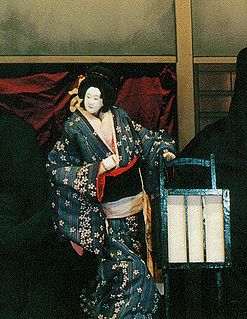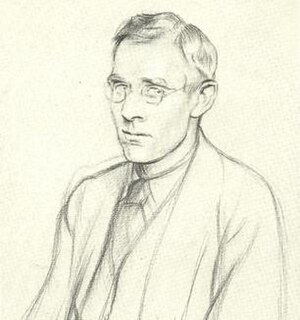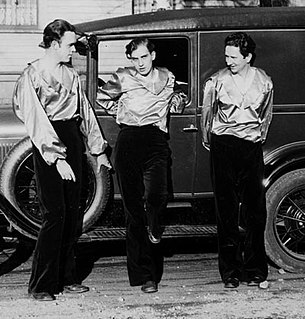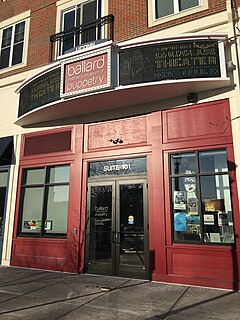Related Research Articles

A puppeteer is a person who manipulates an inanimate object, called a puppet, to create the illusion that the puppet is alive. The puppet is often shaped like a human, animal, or legendary creature. The puppeteer may be visible to or hidden from the audience. A puppeteer can operate a puppet indirectly by the use of strings, rods, wires, electronics or directly by his or her own hands placed inside the puppet or holding it externally or any other part of the body- such as the legs. Some puppet styles require two or more puppeteers to work together to create a single puppet character.

Puppetry is a form of theatre or performance that involves the manipulation of puppets – inanimate objects, often resembling some type of human or animal figure, that are animated or manipulated by a human called a puppeteer. Such a performance is also known as a puppet production. The script for a puppet production is called a puppet play. Puppeteers use movements from hands and arms to control devices such as rods or strings to move the body, head, limbs, and in some cases the mouth and eyes of the puppet. The puppeteer sometimes speaks in the voice of the character of the puppet, while at other times they perform to a recorded soundtrack.

A marionette is a puppet controlled from above using wires or strings depending on regional variations. A marionette's puppeteer is called a marionettist. Marionettes are operated with the puppeteer hidden or revealed to an audience by using a vertical or horizontal control bar in different forms of theatres or entertainment venues. They have also been used in films and on television. The attachment of the strings varies according to its character or purpose.

Bunraku is a form of traditional Japanese puppet theatre, founded in Osaka in the beginning of the 17th century, which is still performed in the modern day. Three kinds of performers take part in a bunraku performance: the Ningyōtsukai or Ningyōzukai (puppeteers), the tayū (chanters), and shamisen musicians. Occasionally other instruments such as taiko drums will be used.

Children's Fairyland, U.S.A. is an amusement park, located in Oakland, California, on the shores of Lake Merritt. It was one of the earliest "themed" amusement parks in the United States. Fairyland includes 10 acres (4.0 ha) of play sets, small rides, and animals. The park is also home to the Open Storybook Puppet Theater, the oldest continuously operating puppet theater in the United States.

Stanley Arthur Morison was an influential British typographer, printing executive and historian of printing. Largely self-educated, he promoted higher standards in printing and an awareness of the best printing and typefaces of the past.

Shadow play, also known as shadow puppetry, is an ancient form of storytelling and entertainment which uses flat articulated cut-out figures which are held between a source of light and a translucent screen or scrim. The cut-out shapes of the puppets sometimes include translucent color or other types of detailing. Various effects can be achieved by moving both the puppets and the light source. A talented puppeteer can make the figures appear to walk, dance, fight, nod and laugh.
A hand puppet is a type of puppet that is controlled by the hand or hands that occupies the interior of the puppet. A glove puppet is a variation of hand puppets. Rod puppets require one of the puppeteer's hands inside the puppet glove holding a rod which controls the head, and the puppet's body then hangs over most or all of the forearm of the puppeteer, and possibly extends further. Other parts of the puppet may be controlled by different means, e.g., by rods operated by the puppeteer's free hand, or strings or levers pulled the head or body. A smaller variety, simple hand puppets often have no significant manipulable parts at all. Finger puppets are not hand puppets as they are used only on a finger.
Youssouf Coulibaly is a Malian puppet designer, puppeteer and storyteller from Mali.

Forman Brown was one of the world's leaders in puppet theatre in his day, as well as an important early gay novelist. He was a member of the Yale Puppeteers and the driving force behind Turnabout Theatre. He was born in Otsego, Michigan, in 1901 and died in 1996, two days after his 95th birthday. Brown briefly taught at North Carolina State College, followed by an extensive tour of Europe.
The manicule, ☛, is a typographic mark with the appearance of a hand with its index finger extending in a pointing gesture. Originally used for handwritten marginal notes, it later came to be used in printed works to draw the reader's attention to important text. Though once widespread, it is rarely used today, except as an occasional archaic novelty.
Marjorie Batchelder McPharlin (1903–1997) was an American puppeteer and authority on the puppet theater. Her two best known puppetry productions were Aristophanes' The Birds (1933) and Maeterlinck's The Death of Tintagiles (1937). She was the author of many books on puppetry, including The Puppet Theatre Handbook. She was the second honorary president of the Puppeteers of America. Her marriage to the puppeteer Paul McPharlin was in 1948, a few months before his death. Marjorie was also the creator of the hand-rod puppet which was a style Jim Henson took up for The Muppets.

A puppet is an object, often resembling a human, animal or mythical figure, that is animated or manipulated by a person called a puppeteer. The puppeteer uses movements of their hands, arms, or control devices such as rods or strings to move the body, head, limbs, and in some cases the mouth and eyes of the puppet. The puppeteer often speaks in the voice of the character of the puppet, and then synchronizes the movements of the puppet's mouth with this spoken part. The actions, gestures and spoken parts acted out by the puppeteer with the puppet are typically used in storytelling. Puppetry is a very ancient form of theatre which dates back to the 5th century BC in Ancient Greece. There are many different varieties of puppets, and they are made from a wide range of materials, depending on their form and intended use. They range from very simple in construction and operation to very complex.

Bernard H. Paul was an American puppeteer best known for his traveling show and television broadcasts of "Paul's Puppets". His marionette show ran for 10 years on WBAL-TV in Baltimore. In 1931 he performed the first known children's television show.

The Ballard Institute and Museum of Puppetry (BIMP) is a public museum of puppetry operated by the University of Connecticut and located in Storrs, Connecticut.

The Museu da Marioneta has been located since November 2001 in the Convent of Bernardas in Lisbon, Portugal, establishing itself as the first museum in Portugal entirely dedicated to the interpretation and dissemination of the history of puppetry, covering the history of this art form across the world, presenting the different types of puppets and the different approaches they allow, with special emphasis on Portuguese puppets.
Randal John Metz is a professional puppeteer and variety/stage performer. He is known for creating puppet productions, and puppet performer for Children’s Fairyland’s Open Storybook Puppet Theater in Oakland, California, the oldest continuously operating puppet theater in the United States. He currently produces seven different puppet shows a year for the theater, and tours his shows throughout California under the name The Puppet Company. He has served several terms as President and Vice-President of the San Francisco Bay Area Puppeteers Guild.

Bessie Alexander Ficklen was an American poet and artist. Her essay on "Dream Poetry", appeared in one of the leading magazines of the 19th-century and attracted much attention. She wrote more for pleasure than for any monetary gain. She was also quite as clever with drawing-pencils as with her pen, and from time to time, for private circulation, published little books of rhyme—simple, jesting doggerel—written and illustrated by her own hand. She was a hand puppeteer, creating them for several decades and writing a book on the subject.
Paul Vincent Davis is an American puppeteer. For over 30 years, he served as Artist in Residence at Puppet Showplace Theater in Brookline, Massachusetts. In the 1980s, UNIMA-USA awarded Davis five Citations of Excellence for his work.
Helen Haiman Joseph was an American puppeteer and author. Known as the "grandmother of American puppetry", she published plays, books, along with puppeteering nationally.
References
- Howard, Ryan. Paul McPharlin and the Puppet Theater. Jefferson, North Carolina, and London: McFarland & Company, Inc., Publishers, 2006.
- McPharlin, Paul. The Puppet Theatre in America: A History, with A List of Puppeteers 1524-1948. New York: Harper & Brothers Publishers, 1949.